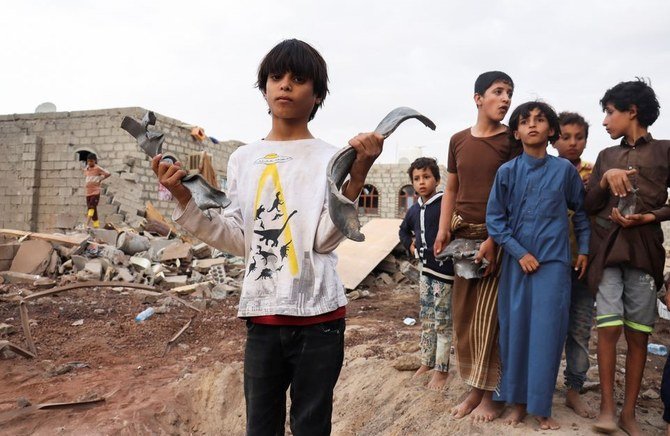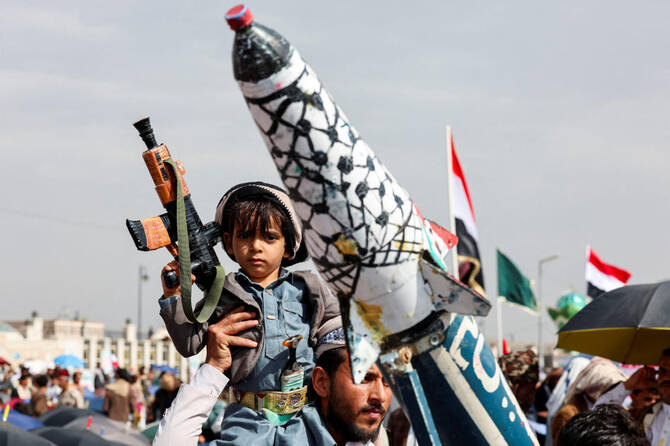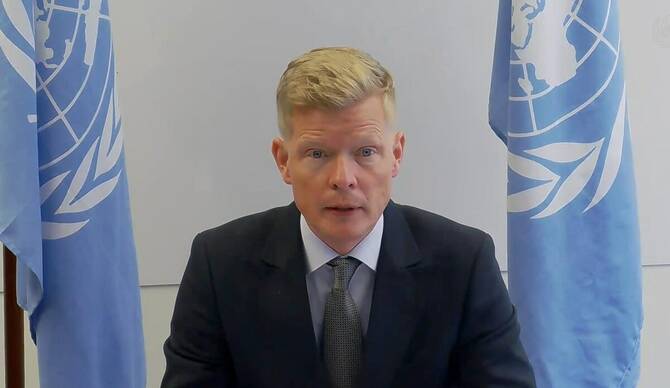Saeed Al-Batati
AL-MUKALLA: Civilian casualties from the war in Yemen and the number of internally displaced people have “substantially” decreased during the six months of the UN-brokered truce, the UN said.
This comes as the Yemeni government says that dozens of families fled Houthi-controlled areas during the truce, taking advantage of the cessation of hostilities in key cities.
The UN Office for the Coordination of Humanitarian Affairs reported this week, in its latest monthly bulletin on the Yemen conflict, that the number of civilians killed or injured over the past six months has been cut in half, reaching 936 — including 288 deaths — between April 2 and Sept. 21, 2022, compared to 2,051 casualties — including 630 fatalities — between October 2021 and March 2022.
There were 343 civilians killed or injured as a result of landmine and unexploded ordinance detonations among the 936 documented casualties.
The UN-brokered cease-fire went into effect on April 2 and expired on Oct. 2 after the Houthis refused to extend it.
During the truce, the OCHA reported a 76 percent decrease in the number of displaced families.
Between April 2 and Sept. 30, 12,294 families were displaced, compared to 46,640 in the six months preceding the truce.
The conclusion of the UN body that no civilians were killed as a result of Arab coalition airstrikes confirms its adherence to its promise to strikes in support of Yemeni government troops during the truce.
Also during the truce, which was renewed twice, the amount of fuel entering Houthi-controlled areas through Hodeidah’s port was more than three times that seen last year, with 52 fuel ships transporting 1.435 million metric tons of fuel, compared to only 23 fuel ships carrying 468,630 metric tons in 2021, according to the OCHA.
Another advantage of the truce was the opening of Sanaa’s airport for commercial flights, which allowed some 26,642 passengers to travel from Yemen to Amman and Cairo for medical treatment and other purposes.
“It (the truce) affected a substantial increase in fuel imports through the Hodeidah ports, opened Sana’a airport to commercial flights, enhanced humanitarian access in some areas, and drove significant reductions in internal displacement and security incidents causing harm to civilians,” the OCHA said in the report.
Similarly, the Yemeni government reported that dozens of families fled Houthi-controlled areas during the truce, taking advantage of the pause in fighting and the reopening of roads connecting Houthi and government-controlled areas.
Najeeb Al-Saadi, head of the government’s Executive Unit for IDP Camps, told Arab News on Monday that his unit has seen an increase in the number of people fleeing to government-controlled areas from Sanaa, Thamar, Saada, Jouf, and other provinces under Houthi control.
“They worry that the Houthi brainwashing education system will have an adverse effect on their children and cause them to enlist in the fighting. Others left because there weren’t any jobs in the Houthi-controlled areas,” Al-Saadi said.






















